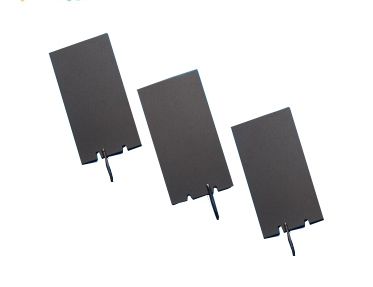(1) Appearance characteristics
For 47131 titanium alloy, more than ten kinds of color films can be produced, such as purple, violet, Prussian, Tianlan, golden yellow, pink, rose red, eggplant, malachite blue, emerald green, apple green, etc. Moreover, the surface of the film is smooth, smooth, continuous, uniform and compact, and the combination with the base metal is firm. 。 At the same time, it is basically applicable to TC4, TC1, TC1M, TC2, TA2 and other titanium alloys, but the best one is 47121 titanium alloy oxide film in terms of brightness and uniformity of the film. It is especially suitable for process decoration and marking.

(2) Variation of film thickness and color
Examples of measured film thickness are as follows: Prussia is 8 x 10 ^(-8) m, golden is 2 x 10 ^(-7) m, and apple green is 8.2 x 10 ^(-7) M. According to our experience, the film thickness below 8 *10 ^(-6) m is a color film, the film less than 4 *10 ^(-8) m is too thin to be light-disturbing, color-unstable and easily polluted, and the film over 8 *10 ^(-6) m is opaque and the color gradually disappears. When the film thickness reaches 5-8 um or more, a porous film with strong adsorptivity, hard and good adhesion and non-conductivity will be formed. Corrosive thick film opens up a new way to solve the problem of wear and scratch initial contact corrosion of titanium alloy.
(3) The relationship between the chemical composition of the film and its color, thickness and bath composition
Six formulation processes were selected to produce various color films (phase 47121) and their chemical compositions were determined. The test results show that the main chemical composition of the films with different formulation, color and thickness are all titanium dioxide, and only trace elements such as Ryu and phosphorus are found. The corrosion resistance of the films can be further improved when phosphorus enters the film layer, while the sulfur enters the film as a harmful impurity. The neutral 8105 formula containing phosphorus is an ideal anodizing bath solution for titanium alloy.
(4) Changes of electrode potential and surface resistance of the film
The measured potential of nude 47131 titanium alloy is – 300 mV, while the potential after anodization rises to + 200 MV. The surface resistance of color film is 1-10_, while that of dark thick film is 1-1.8 *10^ (12-14) _, which lays a foundation for preventing galvanic corrosion.
(5) Chemical stability of membranes
The color anodized 47121 titanium alloy was placed in stainless steel electrolytic polishing bath, and the anodic electrolysis did not corrode for more than one month at a high current density of more than 20A/dm2. In particular, the corrosion resistance of the thick film in the titanium alloy pickling bath solution (HNO3 HF mixed acid) was 5-30 times higher than that of the naked titanium alloy, thus expanding the titanium tube and titanium. The wide application of alloys, especially in chemical equipment, and the improvement of their service life create favorable conditions.
(6) Hydrogen embrittlement
The measured hydrogen content of 47121 titanium alloy before and after anodization is 0.0070% of raw material, 0.0070% and 0.0075% of deoiling and pickling at 30S and 60S, respectively, and 0.0063% after deoiling and pickling and anodizing. Therefore, hydrogen embrittlement will not occur in the anodization of titanium alloys under this process condition. It can be applied to the production of titanium alloy fasteners and other mechanical components.
